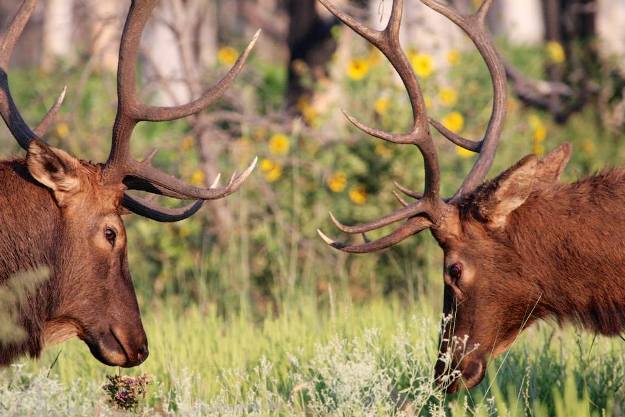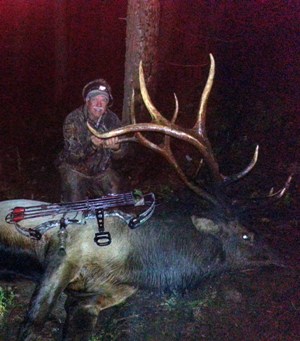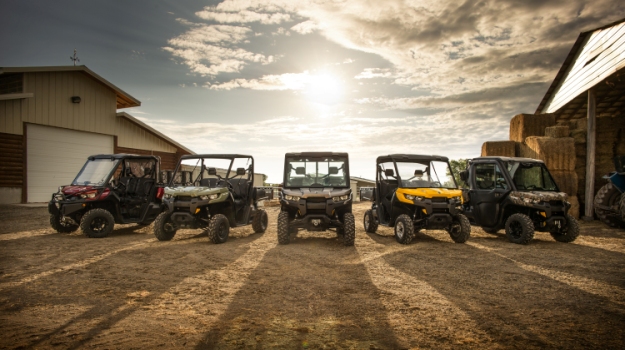
Editor’s Note: Mark Hanson lives in Mesa, Arizona, and has been a Mossy Oak ProStaffer for 7 years. His favorite Mossy Oak camo pattern is Treestand. “I like Treestand because I hunt in a lot of dark timber, high in the mountains, and on land that has been burned. Mossy Oak Treestand fits in every type terrain that I hunt.”
Our deer season starts on August 21 in hot weather. Bowhunting in this weather and climbing mountains isn’t much fun. But when you reach 6,000 feet elevation, the weather is a little cooler than it is down in Phoenix, Arizona. Although I will hunt the early season from time to time, I spend most of my whitetail hunting in the late season, which starts the middle of December. There is one exception to this rule. If I've drawn an early-season elk tag and I'll be hunting at 8,000 feet, where the weather is much cooler, then I’ll hunt both elk and deer. Or, if I'm helping a friend scout and try to find an elk, I’ll hunt the early season. For instance, this year a friend from Missouri has an elk tag, and I’ve offered to help him scout and take an elk. He’ll be coming to hunt on September 11.Our early deer season starts August 21 and goes to September 10. So, I’ll go up to the wildlife unit where my friend has drawn a tag to take an elk, and I’ll start scouting the unit for elk. But I’ll also be hunting high-country mule deer with my bow. A few whitetails may be there, but primarily mule deer live there. I’ll be scouting for elk. However, if I have an opportunity to take a nice mule deer or a whitetail with my bow, I’ll go ahead and fill my tag.
 After 35 years of putting in for a mule deer tag in Wildlife Unit 12B on the Kaibab Plateau, I finally drew a late season (November) tag for a rifle hunt - not a bowhunt. We’re only allowed to take one mule deer per year, whether you take the animal with a bow or with a rifle.So, this year I’ll be concentrating on hunting a mule deer in Unit 12B. The Unit 12B mule deer tag that I’ve drawn is one of 20 available in the drawing. Eleven-hundred people put in for the draw to get one of those tags the previous year. The 20 people who drew this mule deer tag last year had 80-percent success. So, not only does the unit have really big mule deer bucks with an 80-percent success ratio, you know there are a good many of those big muleys there.
After 35 years of putting in for a mule deer tag in Wildlife Unit 12B on the Kaibab Plateau, I finally drew a late season (November) tag for a rifle hunt - not a bowhunt. We’re only allowed to take one mule deer per year, whether you take the animal with a bow or with a rifle.So, this year I’ll be concentrating on hunting a mule deer in Unit 12B. The Unit 12B mule deer tag that I’ve drawn is one of 20 available in the drawing. Eleven-hundred people put in for the draw to get one of those tags the previous year. The 20 people who drew this mule deer tag last year had 80-percent success. So, not only does the unit have really big mule deer bucks with an 80-percent success ratio, you know there are a good many of those big muleys there.
Units 12B and 12A east both have been designated as trophy mule deer areas. If you draw either one of those tags, everyone knows you may have an opportunity to take the biggest mule deer buck of your life. A couple of years ago one of the hunters who drew Unit 12B took a 234-inch mule deer there. If the weather hits just right, and if a lot of snow is present in the High Country, the mule deer will move out of the High Country down to their winter range. This tag is a hard tag to draw, because of the number of big mule deer you may see and the size of the mule deer you may have an opportunity to take. This hunt lasts for 9 days, and I plan to hunt as many of those days as I can.
Right now, my plans are to go to Colorado at the first of November to harvest a cow elk. When I return from that hunt, I plan to head out for this trophy mule deer hunt. I make this Colorado cow elk hunt each year, because there's a group of hunting buddies who meet up there. We have a really large camp. We do very well at harvesting cow elk on that hunt, and I can take a cow for my freezer. But at home in Arizona, I’ll put in for bull elk tags. I've taken two bulls that scored more than 360-inches each.
To learn more about hunting, check out John E. Phillips’ new eBook and print book, “Bowhunting Deer: Mossy Oak Pros Know Bucks and Bows.” You also can download a free Kindle app that enables you to read the book on your iPad, computer or Smartphone.
For information on making jerky from your deer and elk to provide a protein-rich snack, you can download a free book from http://johninthewild.com/free-books.
Day 2: Outhunt Public Land Hunters
Tomorrow: 360-Plus Bull Elk with a Bow




























